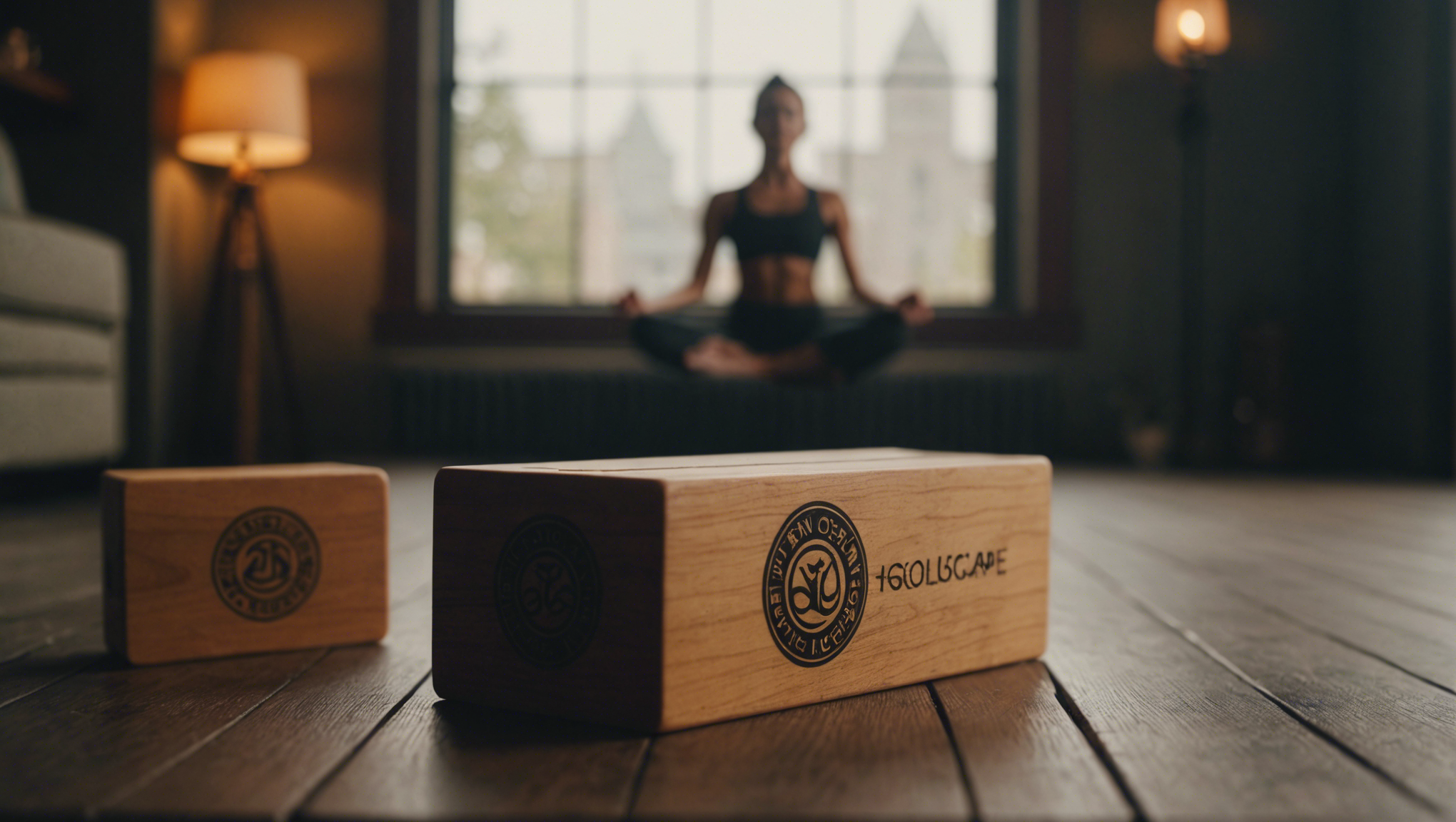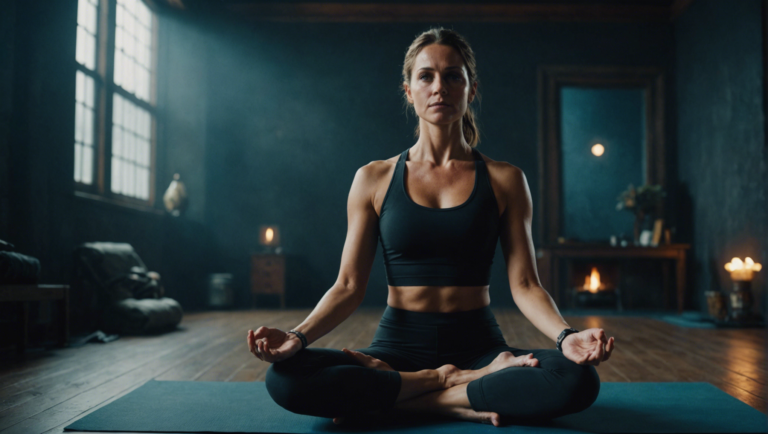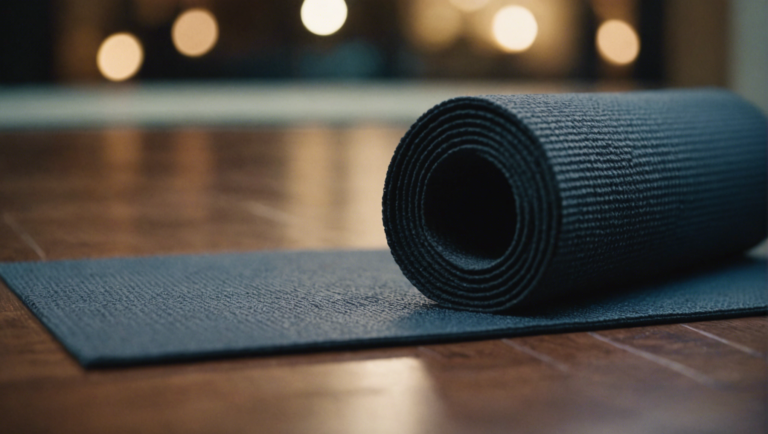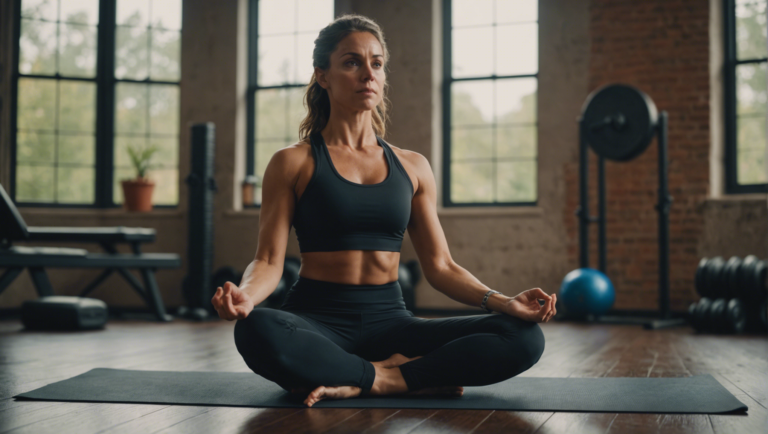Best Places To Buy Yoga Blocks: A Comprehensive Guide
Navigating the Market: Where to Buy the Best Yoga Blocks
When the journey toward enhancing your yoga practice begins, finding the right accessories becomes imperative. Among these, yoga blocks stand out as essential tools for both novices and seasoned practitioners, aiding in alignment, support, and deepening stretches. The market offers a multitude of options, making the task of selecting the best place to purchase yoga blocks a daunting one. This guide aims to navigate through the plethora of choices, ensuring you find the best fit for your yoga journey.
Online Retail Giants
Exploring the Convenience and Variety
The digital marketplace has transformed how we shop for yoga accessories, with online retail giants leading the charge. These platforms offer an unparalleled variety of yoga blocks, catering to a broad spectrum of needs and preferences. From eco-friendly options like cork and bamboo to more conventional foam blocks, the selection is vast. The convenience of having reviews at your fingertips, along with detailed product descriptions, makes these sites a go-to for many.
One of the standout benefits is the competitive pricing and regular deals offered, allowing yogis to find high-quality blocks without overspending. The ease of comparison shopping on these platforms enables consumers to weigh different brands, materials, and prices against each other, ensuring they make an informed purchase tailored to their specific requirements.
Specialty Yoga Stores
Delving into Expert Curated Choices
For those seeking a more personalized shopping experience, specialty yoga stores offer a level of expertise and product curation unmatched by their broader counterparts. These stores, often founded by yoga practitioners themselves, provide a more intimate understanding of what makes a great yoga block. Staff tend to have firsthand experience with the products and can provide valuable insights into the best options for your practice style and needs.
While the range may not be as extensive as in larger online marketplaces, the selection is meticulously chosen, prioritizing quality and sustainability. These establishments often support smaller, eco-conscious brands that produce ethically made blocks, ensuring your purchase aligns with higher ethical and environmental standards.
Local Sporting Goods Stores
Finding Accessibility and Instant Gratification
Local sporting goods stores offer the advantage of accessibility, allowing customers to physically evaluate the yoga blocks before making a purchase. Here, you can assess the weight, texture, and firmness of the blocks firsthand, ensuring they meet your expectations. Although these stores may not specialize in yoga equipment, they often carry a selection of yoga blocks from reputable brands.
For those who prefer the instant gratification of walking out of a store with their purchase in hand, local sporting goods stores provide this convenience. Additionally, these stores can be a great option for last-minute purchases, helping avoid waiting times associated with online shopping.
Sporting Goods Chains
Navigating Through Mainstream Options
National chains of sporting goods stores offer a middle ground between the vast selection of online retailers and the specialized focus of local yoga stores. These chains typically stock a variety of yoga blocks from both well-known and emerging brands, providing a broad overview of what’s available in the mainstream market.
While the staff may not possess the niche expertise found in specialty yoga stores, the wide distribution network of these chains often results in competitive pricing and frequent sales. This makes them an attractive option for yogis seeking value without compromising too much on choice or quality.
Selecting the best place to buy yoga blocks is a deeply personal decision, influenced by individual needs, preferences, and values. Whether prioritizing convenience, expert advice, ethical considerations, or economic value, there’s a shopping avenue that aligns with every yogi’s criteria. By exploring these options, practitioners can ensure they find the right support for their yoga journey, enhancing their practice both on and off the mat.
The Importance of Material and Density in Yoga Blocks
Yoga, a practice steeped in tradition and renowned for its holistic benefits, has evolved over the years, integrating various tools to enhance the experience. Among these, yoga blocks stand out as quintessential aids, offering support and stability for practitioners at all levels. Their significance cannot be overstressed, particularly when considering the crucial aspects of material and density. These factors play a pivotal role in the functionality, durability, and overall effectiveness of yoga blocks, directly impacting the practitioners’ experience and outcome of their practice.
The Critical Role of Material Choice in Yoga Blocks
The material from which yoga blocks are crafted significantly influences their texture, weight, and durability. Traditionally, blocks were made from wood, offering a solid and sturdy support. However, the modern yoga practitioner has a variety of materials to choose from, each with its own set of benefits and considerations.
Eco-Friendly Options: Cork and Bamboo
Cork and bamboo have emerged as popular choices for those seeking eco-friendly options. Cork blocks, in particular, are favored for their natural texture, which provides excellent grip, even in the sweatiest of practices. Additionally, both cork and bamboo are sustainable resources, making them attractive for environmentally conscious yogis.
Lightweight and Versatile: Foam Blocks
Foam blocks, typically made from EVA (ethylene-vinyl acetate), stand out for their lightweight and versatile nature. They are particularly suitable for beginners or those practicing restorative or prenatal yoga, where the gentle and forgiving nature of foam can be advantageous. However, while foam blocks are easily portable and comfortable, they may lack the sturdiness required for more advanced poses.
Durability and Support: Wood Blocks
For those seeking the utmost in support and durability, wooden blocks remain unbeatable. Typically crafted from bamboo, maple, or pine, these blocks are the most durable, providing a firm foundation for any pose. Their weight, however, can be a drawback for those who travel frequently with their yoga gear.
The Significance of Density in Yoga Blocks
Aside from the material, the density of a yoga block is a critical factor that influences its performance. Density affects the block’s stability, support, and how it feels during practice.
High-density Blocks: Firm Support for Advanced Practice
High-density yoga blocks, often found in materials like cork or wood, offer unwavering support, making them ideal for advanced practices that require precision and stability. These blocks can withstand a great deal of pressure, ensuring safety and alignment in challenging poses.
Medium-density Blocks: The Best of Both Worlds
Medium-density blocks strike a balance between comfort and support, making them versatile options for a wide range of practices. Foam blocks often fall into this category, providing enough stability for moderate poses while still incorporating a level of comfort and flexibility.
Low-density Blocks: Comfort and Flexibility for Gentle Practice
Low-density blocks, typically made of softer foam, are best suited for restorative or gentle yoga styles. These blocks are particularly beneficial for practitioners needing extra cushioning or those who prefer a more forgiving support system during their practice.
Balancing Material and Density for Optimal Yoga Practice
Choosing the right yoga block involves a careful consideration of both material and density, guided by one’s personal practice, preferences, and values. For instance, an eco-conscious yogi may gravitate towards cork or bamboo blocks, while a beginner might find foam blocks more accessible and comfortable. Similarly, the desired level of support and stability should guide the choice of density, with high-density blocks catering to more advanced practices and low-density options suited for gentle or restorative yoga.
Yoga blocks are not merely accessories but integral elements that enhance the practice, making the selection of the right material and density pivotal. Whether striving for sustainability, comfort, or durability, there exists a yoga block tailored to meet the needs of every practitioner, ensuring that they can engage fully in their practice with the support and stability necessary for optimal performance and growth.
How to Identify Quality and Sustainable Yoga Blocks
In the world of yoga, the right equipment can significantly enhance your practice. Among the essentials, yoga blocks stand out for their versatility and support. Whether you’re a seasoned yogi or a beginner, finding quality and sustainable yoga blocks is paramount. Let’s delve into the key steps to identifying the best yoga blocks that combine durability, sustainability, and functionality.
Understanding Material and Durability
The first step in selecting a quality yoga block is to look at the material. Yoga blocks are commonly made from foam, cork, or wood.
-
Foam is lightweight and offers excellent cushioning, making it a perfect choice for beginners or those practicing restorative yoga. However, not all foam blocks are created equal. Look for high-density foam that promises durability and support.
-
Cork blocks are eco-friendly and provide a firmer support than foam. They are heavier, which makes them stable but still relatively easy to handle. When choosing cork, ensure it’s sealed properly to prevent crumbling over time.
-
Wood yoga blocks, often made from bamboo or other sustainable woods, are the most durable. They offer the firmest support for yoga practices but are the heaviest option and can be more expensive.
Evaluating Sustainability Credentials
Sustainability is a crucial factor for many yogis. Ethically sourced materials and production processes that minimize environmental impact are indicators of a sustainably made yoga block.
-
Look for products that use natural, renewable materials without harmful chemicals. Cork and wood are inherently more sustainable than synthetic foam, but some manufacturers are now producing eco-friendly foam blocks from recycled materials or using less toxic manufacturing processes.
-
Check for certifications from reputable environmental organizations. Certifications like FSC (Forest Stewardship Council) for wood products or GREENGUARD for low emissions can be a testament to the sustainability of the yoga blocks.
Assessing Size, Shape, and Texture
The right size and shape of a yoga block can significantly affect your practice. Most blocks are rectangular, but sizes can vary. A standard block measures about 9” x 6” x 4”, but larger or smaller blocks may be preferable depending on your body size and how you intend to use them.
-
The texture is also important for grip and comfort. Foam blocks tend to be softer and may have more give, while cork and wood offer a firmer grip. Some blocks feature contoured edges for more comfortable handling.
-
Test the block if possible. It should feel comfortable in your hand and provide a stable surface without being too hard.
Price vs. Quality
While price shouldn’t be the sole determining factor, it’s certainly something to consider. Quality yoga blocks are an investment in your practice.
-
More expensive doesn’t always mean better. Compare materials, sustainability, and user reviews to ensure you’re getting the best value for your money.
-
Consider purchasing from specialized yoga stores or directly from manufacturers known for their commitment to quality and sustainability. This can often ensure you’re getting a product that’s worth the investment.
Reading Reviews and Seeking Recommendations
One of the best ways to gauge the quality and suitability of yoga blocks is to see what others have to say.
-
Look for online reviews and rankings. Websites dedicated to yoga or eco-friendly products often have thorough reviews comparing different yoga block brands.
-
Ask for recommendations from yoga instructors or fellow practitioners. They can offer insights from personal experience that you might not find elsewhere.
Selecting the right yoga blocks is essential for enhancing your practice while aligning with your values of quality and sustainability. By considering material, sustainability credentials, size, shape, texture, and price, and seeking out reputable reviews and recommendations, you can find yoga blocks that support both your yoga journey and the planet.
Online vs. In-Store: Pros and Cons for Yoga Block Shopping
Shopping for yoga blocks, essential tools in enhancing your yoga practice by providing support, stability, and alignment, can be approached in two main ways: online or in-store. Each method offers distinct advantages and challenges. Let’s delve into the pros and cons of each to help you make a more informed decision.
Online Shopping for Yoga Blocks
Pros of Buying Yoga Blocks Online
Convenience
The primary advantage of purchasing yoga blocks online is the sheer convenience. You have the luxury of shopping from anywhere, at any time, without the need to travel. This is particularly beneficial for those with busy schedules or limited access to physical retail stores.
Variety
Online stores typically offer a wider range of yoga blocks than you might find in a traditional store. This variety includes different materials (cork, foam, bamboo), sizes, and colors, enabling you to find the perfect blocks to meet your personal preferences and practice needs.
Price Comparison and Deals
Shopping online makes it easy to compare prices across different retailers to ensure you’re getting the best deal. Additionally, online stores often offer exclusive discounts, promotions, and loyalty programs that can lead to significant savings.
Cons of Buying Yoga Blocks Online
Inability to Physically Inspect Products
One of the major drawbacks of buying yoga blocks online is that you cannot physically touch or inspect the products before making a purchase. This might lead to disappointment if the product doesn’t meet your expectations in terms of feel, weight, or color.
Shipping Costs and Wait Times
Unless you meet the minimum spend for free shipping, you might have to pay additional charges. Moreover, you need to wait for the product to arrive, which can be inconvenient if you need the yoga blocks urgently for a class or workshop.
In-Store Shopping for Yoga Blocks
Pros of Buying Yoga Blocks In-Store
Immediate Product Interaction
Shopping in a physical store allows you to handle and examine the yoga blocks, assessing their weight, texture, and quality firsthand. This immediate interaction can help ensure you’re happy with your choice before making a purchase.
Personalized Advice
In-store shopping often comes with the benefit of expert advice. Sales assistants or yoga instructors may offer recommendations based on your specific needs, providing a level of personalization and assistance that’s hard to replicate online.
No Waiting Period
Purchasing yoga blocks in-store means you can take them home immediately, making this option ideal for last-minute purchases or when you need them in time for a specific event or class.
Cons of Buying Yoga Blocks In-Store
Limited Selection
Physical stores have limited shelf space, which often means a smaller selection of yoga blocks. You might find fewer options in terms of materials, sizes, or brands compared to online stores.
Higher Prices
In many cases, physical stores have higher overhead costs than online retailers, which can translate into higher prices for the same products. Additionally, it’s more challenging to compare prices across different stores without investing a significant amount of time and effort.
Convenience
Unlike online shopping, visiting a store requires you to travel, which can be inconvenient, especially for those living far from yoga or sporting goods stores. This also includes carving time out of your schedule to make the trip, which might not always be possible.
Whether you choose to buy yoga blocks online or in-store depends on your personal preferences and priorities. If convenience, variety, and price are your main considerations, online shopping might be the best route. However, if you value immediate product interaction, personalized advice, and the ability to take your purchase home the same day, then visiting a physical store would be more beneficial. Ultimately, the right approach is the one that best aligns with your unique needs and circumstances, ensuring that your yoga practice is supported by the perfect blocks.
Incorporating Yoga Blocks into Your Practice: Tips and Techniques
Yoga blocks are invaluable tools in enhancing your practice, allowing for better alignment, deeper poses, and increased strength. Yet, many practitioners, both beginners, and experienced yogis, overlook their potential. Understanding how to effectively use these tools can transform your yoga journey, providing support, stability, and stretching enhancements where needed. The following expert insights offer practical tips and techniques for integrating yoga blocks into your routine, aiming to optimize your practice for both efficiency and enjoyment.
Why Use Yoga Blocks in Your Practice
Yoga blocks are more than mere props; they are extensions of your practice that foster precision in alignment and deepen your asanas. They are particularly beneficial in bridging the gap for those who are working on flexibility, providing a reachable "floor" that can be adjusted according to your needs. Additionally, they can add a challenge to balance poses or strength exercises, making them versatile tools for all levels.
Selecting the Right Block for Your Practice
The material of the yoga block you choose—be it foam, cork, or wood—can significantly impact its functionality. Foam blocks are lightweight and softer, ideal for restorative practices or for those with sensitive wrists and knees. Cork and wood blocks offer more stability and durability, perfect for supporting weight in balancing poses or aiding in advanced stretches. Your choice should align with your personal practice needs and comfort preferences.
Enhancing Alignment and Deepening Poses
One of the primary functions of yoga blocks is to aid in alignment. For instance, in poses such as Triangle (Trikonasana) or Half Moon (Ardha Chandrasana), placing a block under your hand can prevent overreaching and help align your shoulders, hips, and ankles. This not only improves the effectiveness of the pose but also minimizes the risk of strain or injury.
Exploring New Poses Safely
Yoga blocks can also be instrumental in exploring new, more advanced poses. By acting as an intermediate step, they allow you to experience the pose’s form and benefits before achieving the full expression. For example, placing a block under the hips in Bridge Pose (Setu Bandhasana) can help maintain alignment and open the chest more fully, making the pose accessible for beginners or those with tight shoulders.
Building Strength and Flexibility
Integrating yoga blocks into strength-building poses or flexibility exercises can enhance the intensity of your practice. Using blocks in poses like Plank can increase core engagement by elevating the challenge. Similarly, for flexibility, placing a block between your thighs in poses like Chair (Utkatasana) can encourage deeper engagement and a more intense stretch in the legs and lower back.
Restorative Practices and Breath Work
Not only do yoga blocks aid in active asanas, but they also play a crucial role in restorative practice and pranayama (breath work). Using blocks to support the body in poses like Supported Bridge or during seated meditation can help release tension and deepen relaxation, allowing for a more meditative and rejuvenating practice.
Regular Incorporation for Ongoing Benefits
Making yoga blocks a consistent part of your routine can dramatically enhance the quality and depth of your practice over time. Their versatility makes them suitable for a variety of styles and levels, ensuring that you continue to feel supported and challenged as you grow. Regular use encourages mindfulness about alignment and body awareness, fostering a safer and more fulfilling yoga journey.
Yoga blocks into your yoga practice is about embracing the philosophy of growth and support inherent in yoga itself. By leveraging these tools, you not only enhance your physical practice but also deepen your connection to yoga’s introspective and restorative aspects. Whether you’re a seasoned yogi or just beginning, the thoughtful integration of yoga blocks can open new pathways in your journey, marked by alignment, strength, and harmony.
Conclusion
Discovering the Ideal Source for Your Yoga Blocks
As we explore the journey toward enhancing our yoga practice, the selection of yoga blocks emerges as a critical step not just in elevating our physical engagement but also in deepening our spiritual and mental connection to the discipline. The quest for the best places to purchase yoga blocks is enriched by a comprehensive understanding of what constitutes excellence in this essential yoga accessory. From navigating the bustling marketplaces, both digital and physical, to discerning the subtle nuances in material and density that mark a yoga block’s quality, the journey is as intricate as it is intimate.
The fabric of our discovery is woven from the threads of knowledge about the materials that set the stage for longevity, performance, and environmental stewardship in yoga block production. As we delve into the various compositions—from the traditional cork and bamboo to the modern eco-friendly foams—the narrative extends beyond mere functionality, touching upon the ethos of sustainability that aligns with the very essence of yoga practice. This exploration is not simply about finding an accessory but about making a choice that resonates with our values and our commitment to the planet.
Quality and sustainability stand as pillars in the selection process, guiding us toward products that honor the legacy of yoga while embracing the responsibility we bear to future generations. Identifying yoga blocks that embody these principles requires a keen eye and a well-informed mind, seeking out certifications and manufacturing processes that eschew the transient in favor of the lasting, the ethically produced over the exploitative.
The debate between online and in-store purchasing unfolds with each option presenting its unique advantages. The convenience and breadth of choice offered by the internet stand in contrast to the tactile, personalized experience of a retail outlet, where the qualities of a yoga block can be directly assessed. This dichotomy does not demand a definitive selection but rather invites a blend of approaches, encouraging us to enjoy the immediate gratification found in physical stores while leveraging the expansive reach of online platforms.
Yoga blocks into our practice transcends the acquisition of a tool, evolving into a journey of discovery. Through tips and techniques shared by seasoned practitioners, we uncover the transformative potential housed within these simple blocks. By adapting their use to our evolving needs and practices, we unlock new dimensions of flexibility, stability, and depth in our poses. This pathway of incorporation is emblematic of the larger journey of yoga—a continual unfolding of potential, a deepening of understanding, and a steady march toward equilibrium and awareness.
The dialogue around the best places to buy yoga blocks, the importance of their composition, the pursuit of quality and sustainability, and the nuances of shopping modalities converges on a singular truth: our choice of yoga blocks is a reflection of our personal journey in yoga. It’s about more than just support for our poses; it’s about supporting a lifestyle, a philosophy, and a commitment to our practice and our world.
As we navigate these considerations, we find that our exploration is as much about introspection and alignment with our personal yoga journey as it is about the physical act of purchasing. Each decision, each preference, and each insight gathered along the way paints a part of the larger picture of our yoga practice, revealing not only our dedication to the discipline but also our devotion to a life lived with intention and awareness.
Thus, as we stand, sit, or stretch upon our chosen yoga blocks, let us remember the journey that brought them into our practice. Let these blocks be not just tools, but teachers—reminders of our commitment to mindfulness, sustainability, and the eternal student within us all seeking balance, strength, and serenity on and off the mat.



